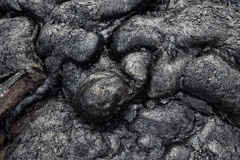
|
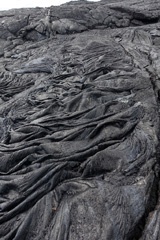
|
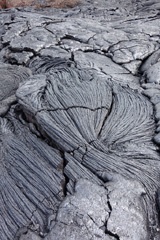
|
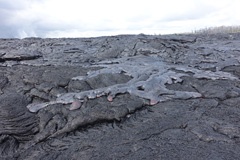
|
The last thing I felt like doing was setting the alarm for 4.30, as I was very sleepy from the early morning start of the previous day. To make matters worse, I get cramps at night when I do unaccustomed exercise. Yesterday was a tough day, being the Mauna Loa climb. So after I fell asleep I kept waking up, as one by one, various muscles cramped up. Each time I had to get up to walk around, or ask Carla to massage the affected area. Nor did I feel like doing the two-hour drive to the lava field, as I had now done it a few times. However, I knew that this excursion would be worth the effort.
I drove off before 5 and arrived five minutes late, at 7.05 at the house of the couple who run the lava tour, as I had mixed up the streets. Scott and Cheryl take tourists to the active lava field through a track they cleared on their land. They do this about twice a week whenever there is a lava flow in the area. The lava is unpredictable and the flows change from day to day, and even hour to hour. We were a group of seven people: three Aussies, two young American doctors, and the tour guides. I was asked to sign a waiver of legal liability, as approaching active lava entails a degree of risk. I said that if there were no risk I would not have signed up for the tour.
Scott drove us to their property, parking his four-wheel-drive truck in the mud. Then we walked for two miles over a track through the rainforest that was 95% mud. One of the ladies, a diminutive Asian, had never hiked in nature before, so she was very anxious. She even thought she would not make it. I found this strange, but I guess it wasn't an easy introduction to trekking. In fact, it was almost impossible to avoid stepping into the mud multiple times. Cheryl set a good pace and Scott brought up the rear, encouraging us to enjoy the mud.
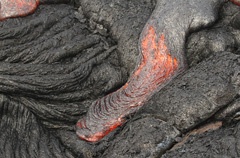
|
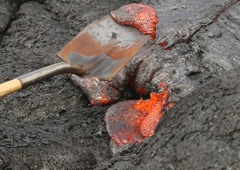
|
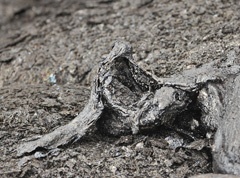
Lava solidifies quickly
|
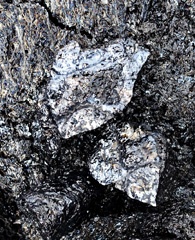
|
Presently, we reached a field of fresh lava, ie some weeks old. We heard explosions due to gas catching fire in the distance and saw trees smoking not far away. The lava field we walked on was warm and even hot in some places, due to the liquid lava beneath. Its surface was crumbling a little due to people walking over it. It seems the fresh lava is more brittle than the older deposits. In places the lava looked shiny and metallic. Scott went on ahead to find an active flow. After a while they found where the red lava was seeping out. The leading edge of the lava is red but it soon forms a black crust when it stops flowing. I observed it forming rope-like wrinkles when its flow was obstructed. These are characteristic of pahoehoe lava, which is the local variety. Cheryl told us that when there is heavy rain so much steam is generated that it is impossible to see anything.
Scott showed what happens when you poke the red lava with a stick. The stick makes a hole and yellow fire bursts out, due to burning gas being released. We took turns shovelling the molten lava, which is heavy, extremely viscous and hot (1,000 C). It is too hot to stand next to it for more than a short time. It becomes solid quite quickly when you drop the molten rock off the shovel. The lava just oozed out peacefully, as if this were perfectly normal. In fact, lava has been seeping out of the Hawaiian magma hotspot for the last million years or so. The entire landmass of the Hawaii islands is due to accumulated lava flows.
It is logical that Pele, the goddess of volcanoes and lava, holds primacy in the local religion. The Hawaiians do not think it appropriate to poke the lava with a stick or shovel, but they are willing to tolerate non-Hawaiians doing so. Scott was sensitive to their beliefs and makes sure that people did not poke the lava when Hawaiians are around. Like the Hawaiians, I felt awed by this elemental force of nature, the literal creation of land.
Seeing molten lava at such close quarters was the highlight of the whole trip for me.
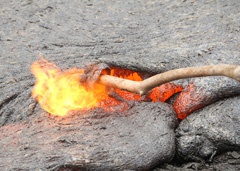
|
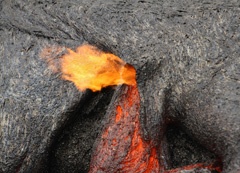
Burning gas
|
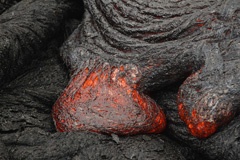
|
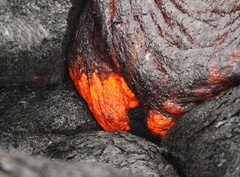
|